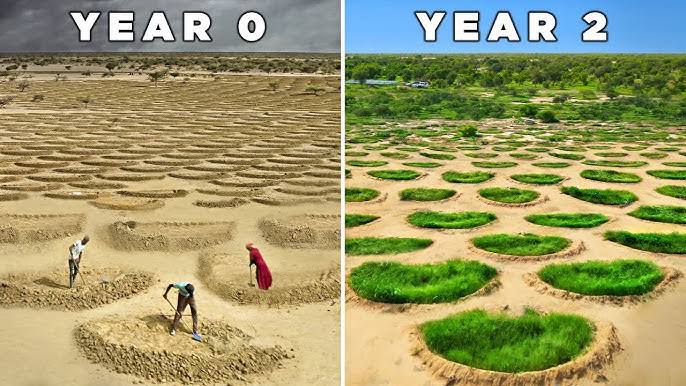“China’s Revolution: Challenge to Make Forest in Desert”

Introduction
China’s efforts to plant vegetation in the Taklamakan Desert have been ongoing for several decades, particularly gaining momentum in the late 20th century and into the 21st century.
Significant reforestation projects began in the 1950s, but large-scale initiatives were notably ramped up in the 1990s and 2000s. The Chinese government has implemented various programs aimed at desertification control, such as the “Great Green Wall” project, which includes planting trees and vegetation in desert regions.
If we looking for specific years or milestones, the “Great Green Wall” initiative was officially launched in 1978, but it has evolved and expanded over the years with various phases and goals.
China is planting plants in the Taklamakan Desert, which is sometimes referred to as the “Magnolia Desert” in certain contexts. This initiative is part of a broader effort to combat desertification and improve the ecological environment in arid regions.

Here are some key reasons for this effort:
1. Desertification Control:
The Taklamakan Desert has been expanding due to factors like climate change and human activities. By planting vegetation, China aims to stabilize the soil, reduce sandstorms, and prevent further desertification.
2. Biodiversity Restoration:
Planting native and drought-resistant plants helps restore the local ecosystem, promoting biodiversity and creating habitats for various species.
3. Carbon Sequestration:
Trees and plants absorb carbon dioxide, which can help mitigate climate change by reducing greenhouse gases in the atmosphere.
4. Economic Development:
Rehabilitating desert areas can lead to the development of agriculture and tourism, providing economic opportunities for local communities.
5. Water Conservation:
Certain plants can help improve soil moisture retention and contribute to the water cycle, benefiting surrounding areas.Overall, these efforts are part of China’s larger environmental strategy to enhance sustainability and protect natural resources.

The effectiveness of reforestation efforts
The effectiveness of reforestation efforts in combating desertification in areas like the Taklamakan Desert has shown some positive results, although challenges remain.
Regarding the effectiveness of these initiatives:
1. Soil Stabilization:
Planting vegetation has helped stabilize the soil in certain areas, reducing erosion and preventing sand from being blown away by the wind. This stabilization contributes to a healthier ecosystem.
2. Biodiversity Improvement:
Reforestation has led to an increase in local biodiversity. The introduction of various plant species has provided habitats for wildlife, helping to restore ecological balance.
3. Microclimate Creation:
Vegetation can alter the local microclimate, leading to increased humidity and potentially more rainfall in the region. This can create a more favorable environment for agriculture and other forms of land use.
4. Community Involvement:
Many reforestation projects involve local communities, which helps raise awareness about environmental issues and encourages sustainable practices.
However, there are challenges as well:-
Survival Rates:
Not all planted trees and plants survive due to harsh climatic conditions, water scarcity, and poor soil quality.
5. Long-term Commitment:
Successful reforestation requires long-term commitment and maintenance, which can be difficult to sustain over time.
6. Climate Change:
Ongoing climate change impacts can affect the success of these initiatives, as changing weather patterns may hinder growth.
Overall, while reforestation has made strides in combating desertification, it is part of a larger strategy that needs continuous support and adaptation to be fully effective.
Conclusion
In conclusion, China’s reforestation efforts in combating desertification represent a significant step towards environmental restoration and sustainability. While there have been notable successes in soil stabilization, biodiversity enhancement, and community engagement. Challenges such as survival rates of planted vegetation and the impacts of climate change persist.
Continued commitment, innovation, and adaptive strategies will be essential for these initiatives to thrive and for China to effectively combat the ongoing threat of desertification. By learning from both successes and setbacks, China can pave the way for a greener future, not only for its deserts but for the global environment as well.

Post Comment